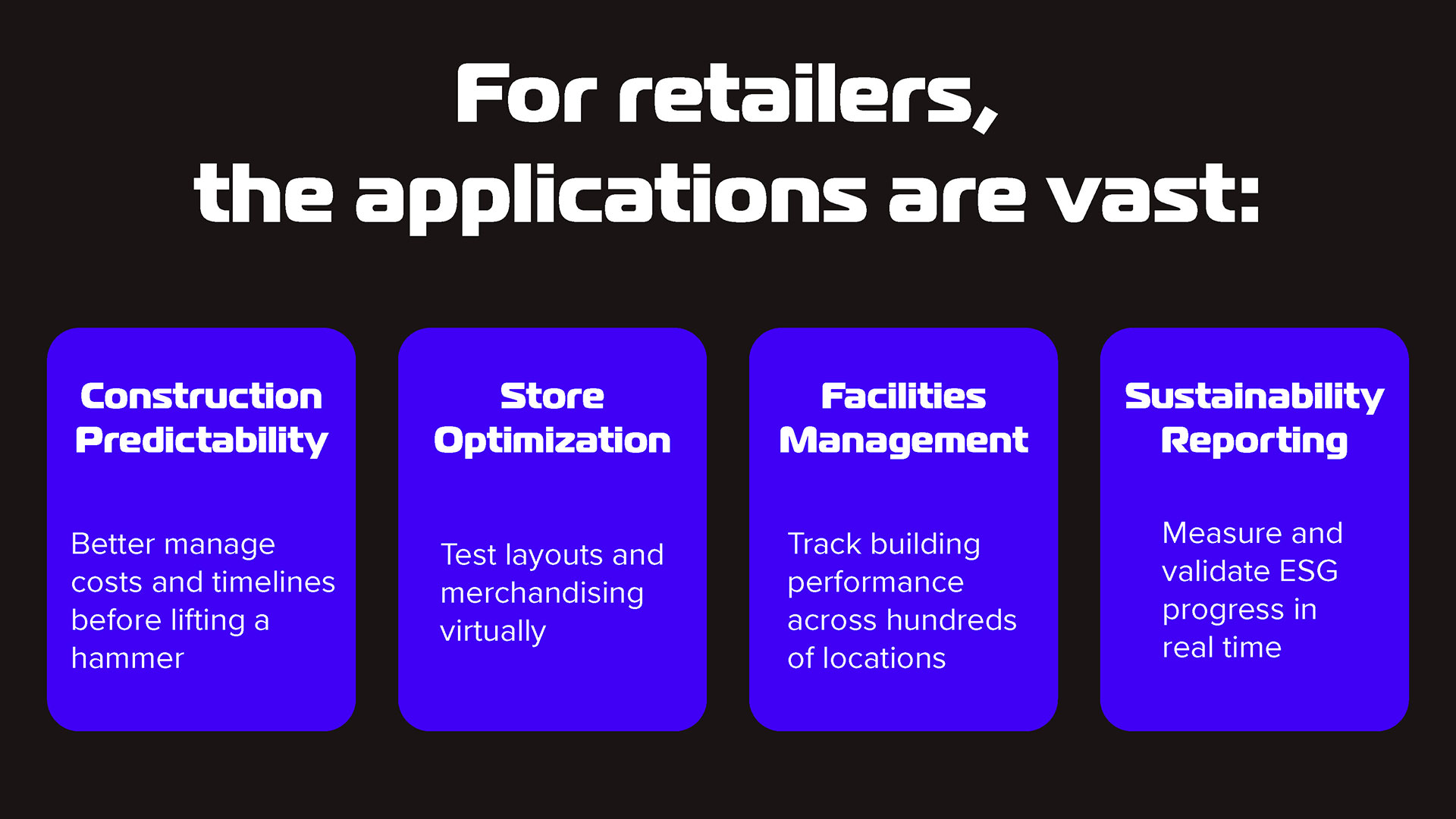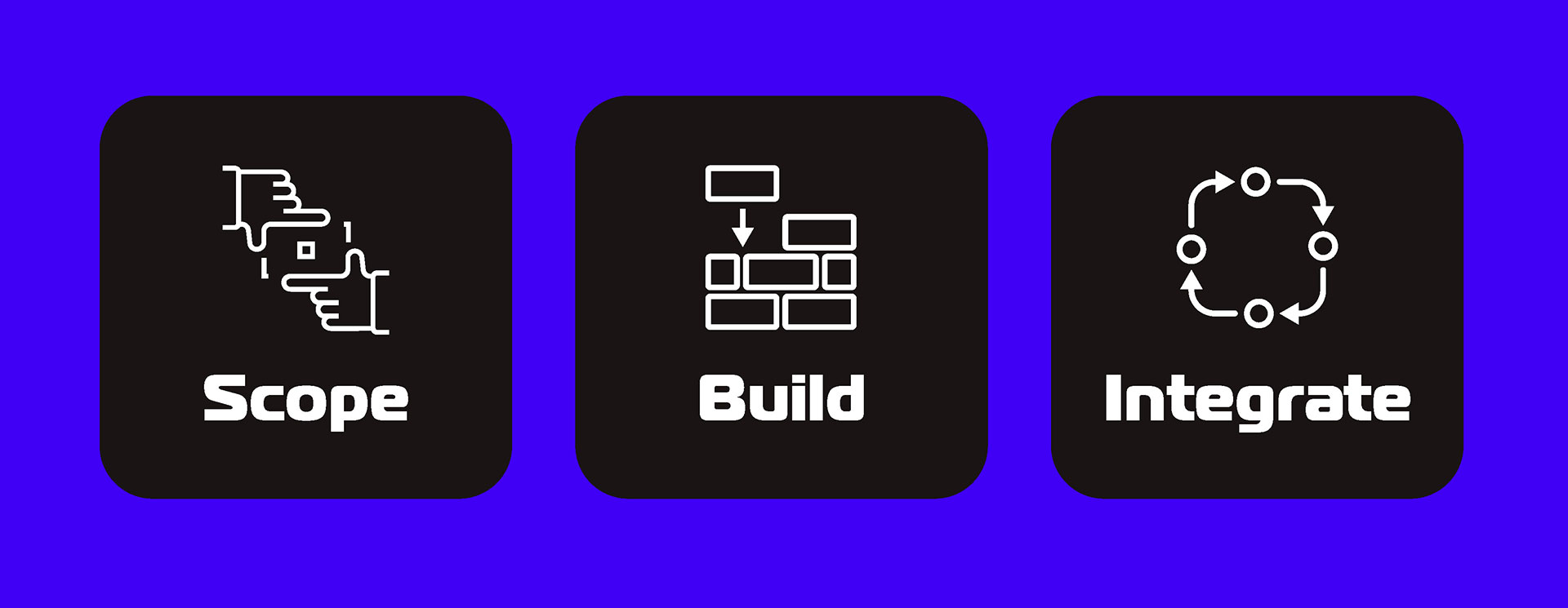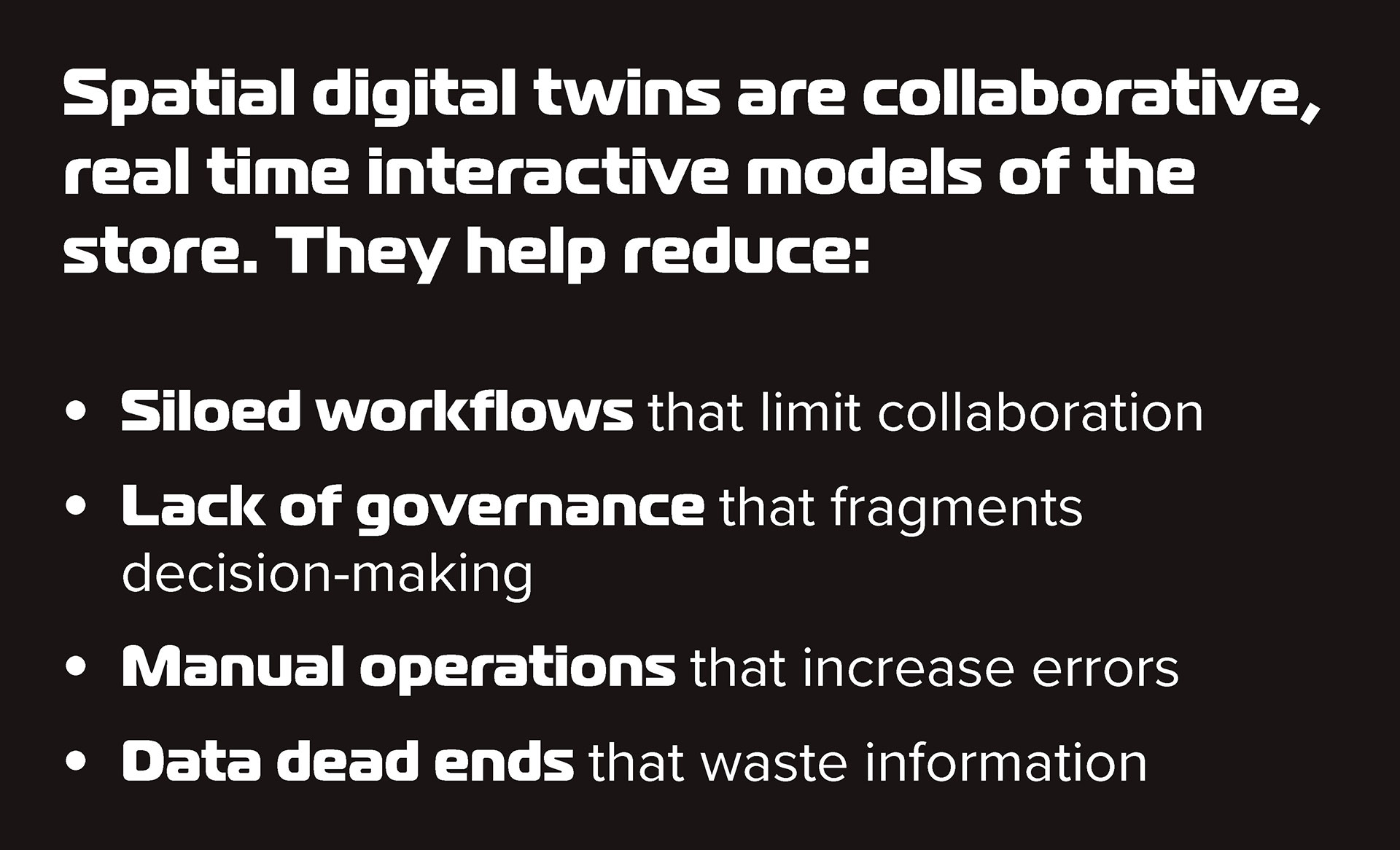
Building the Future of Retail with Spatial Digital Twins
Leveraging Opportunities for Data Connectivity With Existing Digital Infrastructure
Estimated Read Time: 4 Minutes
Retail is at a tipping point—and technology is the driver. The pace of innovation is transforming industries from manufacturing to healthcare, and retail cannot afford to lag behind. If your asset portfolio still relies on outdated systems and disconnected processes, you’re leaving opportunities on the table. By adopting the same technologies powering other industries—digital connectivity, real-time data processing, and advanced modeling—retailers can push beyond traditional operations, unify their existing processes, and unlock a smarter, more resilient way to manage their business.
What Is a Spatial Digital Twin and Why Does It Matter?
A spatial digital twin is more than a digital model. It’s a dynamic, data-driven replica of a store, asset, or even an entire fleet of locations. Powered by continuous streams of information, a spatial digital twin mirrors reality, enabling leaders to test ideas, predict outcomes, and make smarter decisions.

The result is a single source of truth that drives alignment and agility across the business.
How to Get Started

You are likely closer to a Spatial digital twin than you think you are. Spatial digital twins leverage digital infrastructure data (for example – BIM and CAD) as their base. From this level of representation, Retailers achieve success through three key phases:
- Scope – Align stakeholders, define goals, organize data, and establish a framework for creating and connecting information.
- Build – Establish digital infrastructure, tag assets, and implement management protocols.
- Integrate – Connect IoT devices, validate data transfers, and create dashboards to visualize performance in real time.
The process is as much about culture as technology—requiring data ownership, governance, and collaboration to sustain results.
What Problems Do They Solve?

Spatial digital twins flip these pain points into strengths: transparency across projects, clear accountability, automation that reduces errors, and standardized data that everyone can trust.
Are There Real-World Examples?

Yes—and they’re already delivering value. Retailers can think about adopting spatial digital twins as a crawl, walk, run strategy that grows in sophistication over time:
Crawl: National Bakery & Cafe Brand
A leading bakery-cafe chain began by reviewing its BIM standards and existing BIM assets. We provided an audit of strengths and weaknesses, then revamped their standards based on client goals, program needs, and future-proofing opportunities. This stage focused on building a solid foundation for future scalability.
Walk: Major Home Improvement Retailer
Taking the next step, a national home improvement chain approached digital twin adoption more holistically. The effort involved speaking with 20+ business units across the company to convert store planning into Revit and create an organization-wide strategy for generating and leveraging BIM data. The initiative helped reduce reliance on undocumented tribal knowledge—especially important as key players neared retirement—and established data-driven decision-making processes. This was a highly consultative, collaborative engagement.
Run: National Wholesale Retail
A large wholesale retailer advanced to a full end-to-end digital twin strategy. This included creating BIM standards and a roadmap for an internal digital twinning platform, building the digital infrastructure, and connecting data across both existing and new platforms. The initiative spans the entire fleet of 600+ locations, with efforts from reality capture through BIM creation and ongoing data integration. This is digital twin maturity in action.
Why Should Retailers Act Now?
Retail grows more complex by the day, and technology is advancing even faster. Falling behind means missing out on tools that other industries already use to gain efficiency and insight. Spatial digital twins offer retailers the chance to bring that same level of sophistication to their asset portfolios.
The winners will be those that can turn complexity into clarity. Spatial digital twins offer that clarity by providing a living, breathing model of operations that reduces costs, streamlines processes, and improves sustainability. And while the concept once sounded futuristic, digital twins are proving their ROI today. They’re helping retailers accelerate time-to-market, cut operational costs, and build resilience in an unpredictable world.What’s Next for Retail Spaces?
The next era of retail won’t be about “bricks versus clicks.” It will be about how seamlessly companies bridge the physical and digital to create smarter systems.
For retailers ready to future-proof their business, the message is clear: start building now. Because the future of retail spaces won’t just be constructed—it will be simulated, optimized, and continuously improved..
Ready to Take Your Retail Spaces From Static to Strategic?
Connect with Bianca, our spatial digital twin expert, to unlock a customized roadmap for your business.

 Bianca Doerschlag
Bianca Doerschlag


